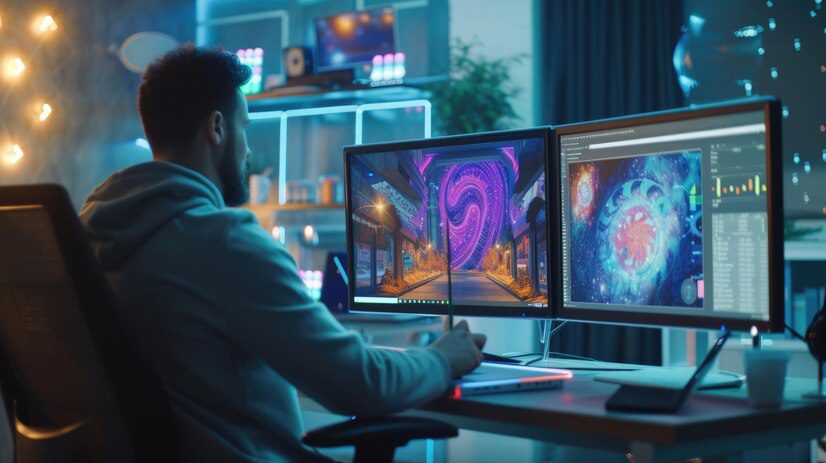Gamers, assemble! Ever felt like you’re stuck in a tutorial loop, hopelessly confused by convoluted menus or clunky controls? Or maybe you’ve experienced that heart-dropping moment when immersion shatters because of a nonsensical plot point? These, my friends, are the pitfalls of neglecting game UX design.
Game UX design isn’t just about fancy menus and eye-catching graphics (although those are important too). It’s the magic behind the curtain, the silent hero that ensures your gaming experience is smooth, intuitive, and downright addictive. Think of it as the bridge between the developer’s vision and the player’s enjoyment. Here’s why game UX design is the ultimate power-up in the 3D video game world:
Immersion: From Pixels to Portals
Great 3D games transport you to another world. But a clunky interface or confusing controls can yank you right back to reality faster than you can say “game over.” Game UX design ensures seamless interaction with the game environment, allowing players to focus on the story, the challenge, and the pure joy of playing.
User-Friendly Doesn’t Mean Dumbed Down
A common misconception is that game UX design is about making games easy. Not true! It’s about making them intuitive and engaging, regardless of the complexity. A well-designed UX guides players through the learning curve without spoon-feeding them every step. Think of it as a helpful co-pilot, not a backseat driver.
The Art of the Onboarding Grind
The first impression is everything, and that applies to games too.An effectively crafted onboarding process establishes the atmosphere for the entire journey ahead. Game UX design ensures players understand the mechanics, controls, and story arc without feeling overwhelmed by a barrage of information.
Keeping It Simple, Stupid (But Not Actually Stupid)
In the fast-paced world of 3D gaming, players don’t want to waste time deciphering cryptic menus or figuring out where to go next. Game UX design prioritizes clear communication and intuitive user interfaces. Think minimalist design, logical navigation, and well-placed tutorials – all delivered in a way that complements the game’s aesthetics. 3D game development involves creating immersive virtual worlds and interactive experiences using advanced graphics and technology.
The Power of Feedback
Great games give you that satisfying “ding” when you level up or a subtle vibration when you take damage. Game UX design utilizes audio and visual cues to provide players with constant feedback on their actions. This feedback loop keeps players engaged, informed, and ultimately, in control.
Building Bridges, Not Walls
A game can have the most stunning visuals and epic storyline, but if the controls feel like trying to herd cats, players will tap out faster than you can say ” rage quit.” In the UX design game, controls are fine-tuned to be responsive, intuitive, and customized to suit the particular genre. Think smooth character movement, precise aiming mechanics, and button layouts that feel natural, not like a contortionist act.
The Power of Choice (and Not Feeling Lost)
Open-world 3D games offer vast landscapes and seemingly endless possibilities. But with that freedom comes the potential for confusion. Game UX design helps players navigate these expansive worlds by providing clear objectives, intuitive waypoints, and well-designed maps. It’s about giving players the freedom to explore while ensuring they don’t get hopelessly lost in the digital wilderness.
Beyond the Finish Line: Keeping the Grind Engaging
The best games offer more than just a single playthrough. Game UX design encourages players to keep coming back for more by incorporating features like achievements, unlockables, and engaging post-game content. It’s about creating a sense of progression and rewarding players for their dedication.
Conclusion
Game UX design is the invisible force that elevates a good game to a great one. It’s the secret sauce that keeps players engaged, immersed, and coming back for more. So, the next time you’re lost in a beautifully rendered world, battling epic bosses and conquering quests, remember the silent hero behind it all: the game UX designer. They’re the ones who make sure your gaming experience is nothing short of epic. Now, go forth and conquer those virtual worlds, armed with the knowledge that good UX is the ultimate power-up!







